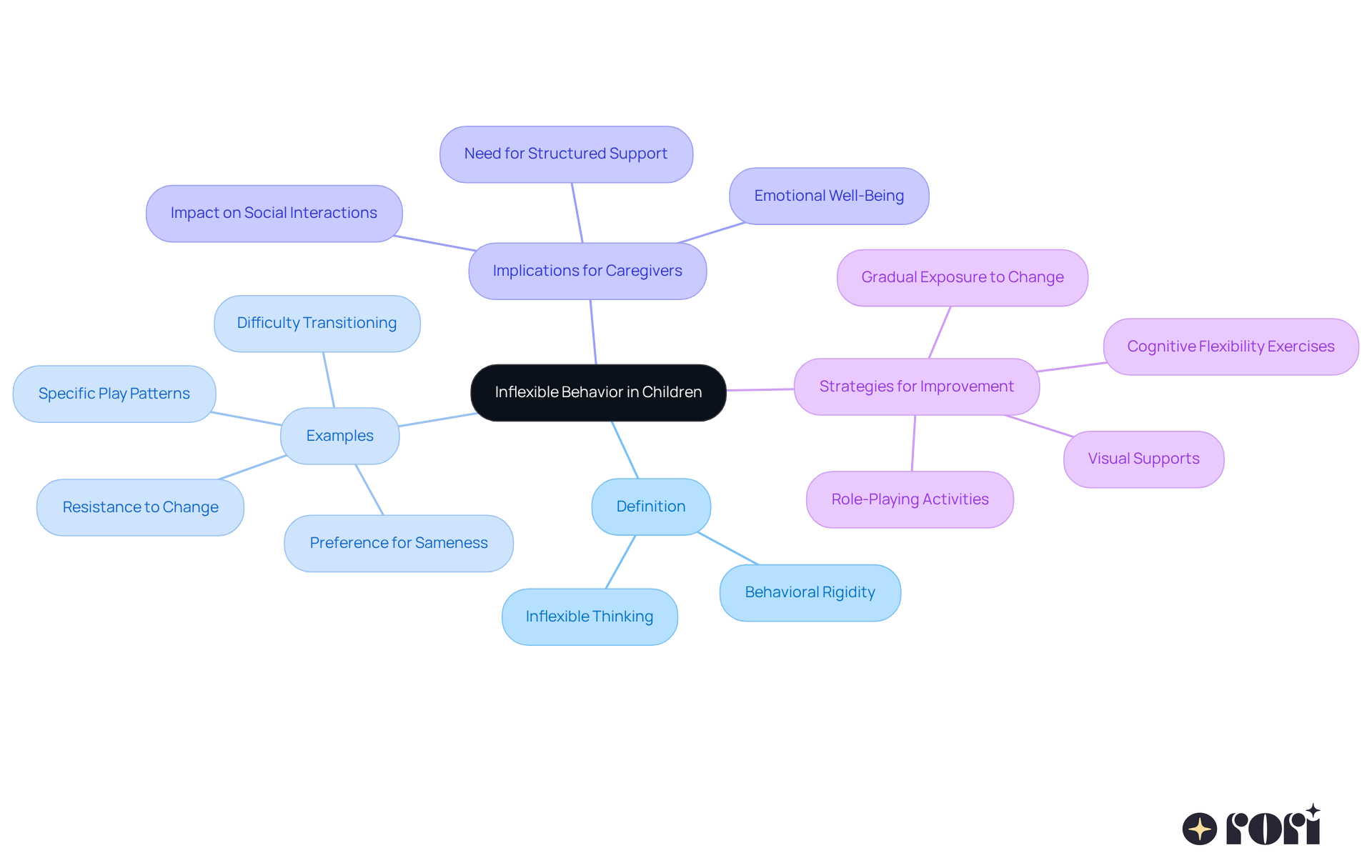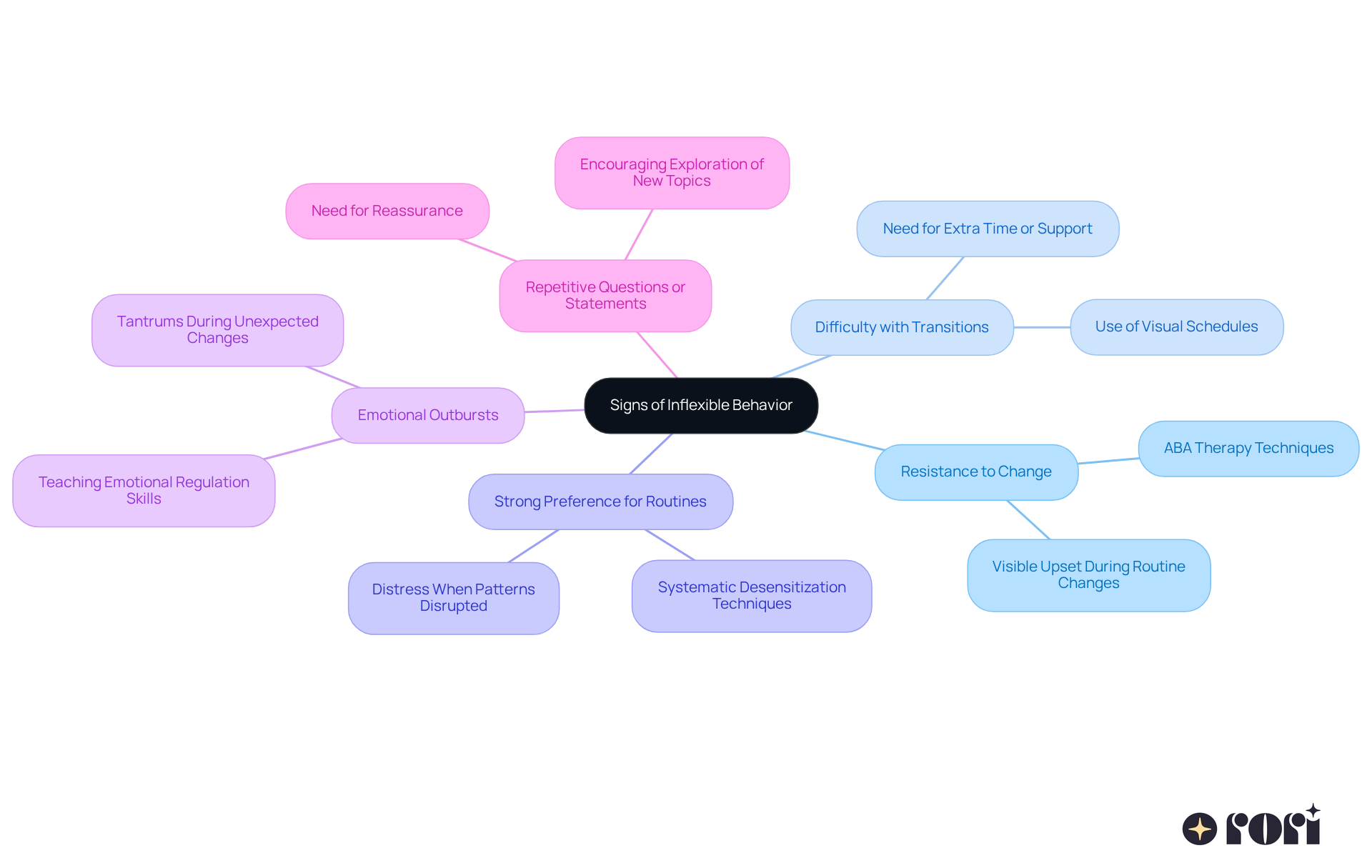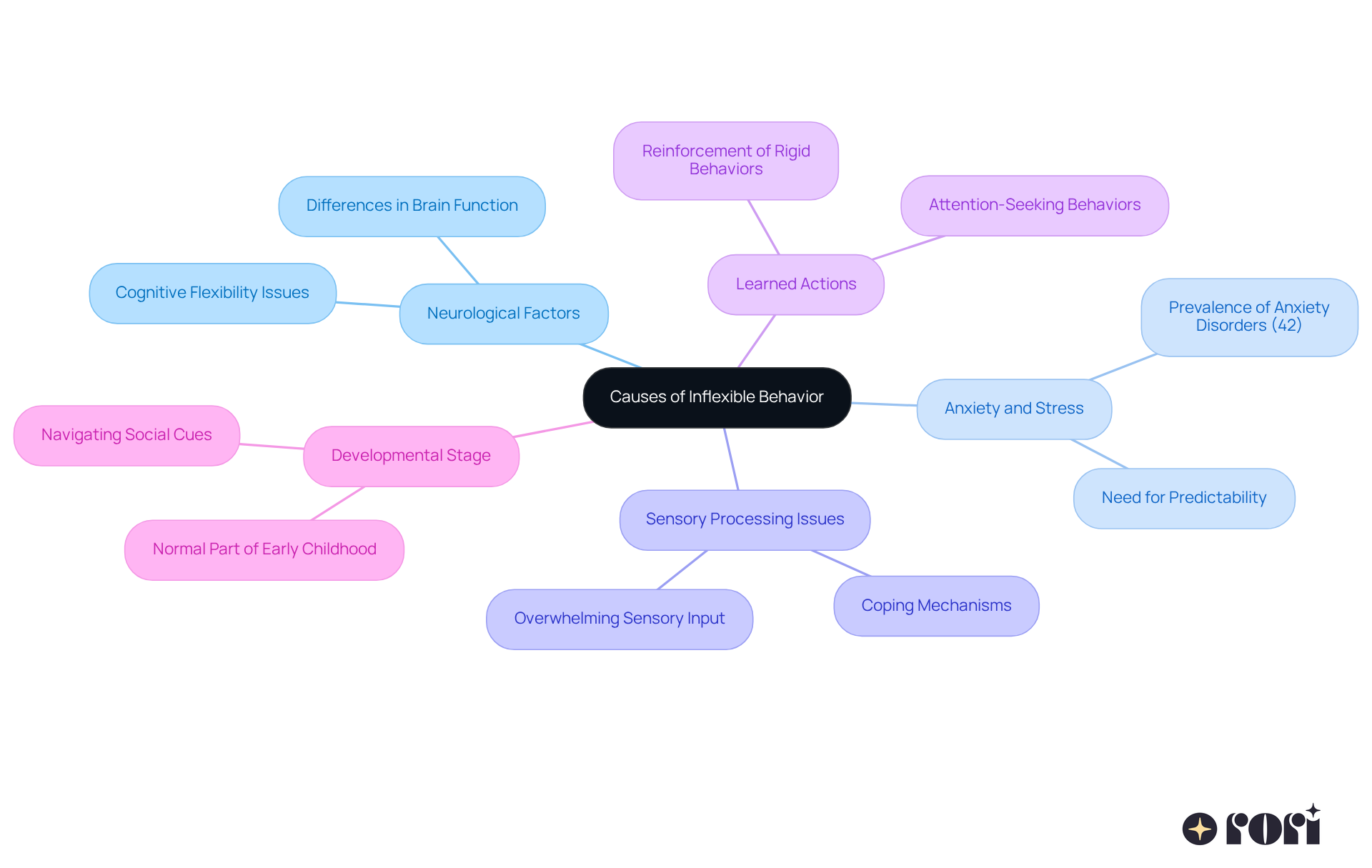Inflexible behavior in children can be quite a challenge for parents. It often shows up as resistance to change and difficulty transitioning between activities. This behavior can stem from various factors, like neurological issues, anxiety, or learned behaviors, especially in kids with autism. Understanding these behaviors is essential for caregivers, as it helps in finding effective strategies to support their little ones.
Imagine using visual aids or emotional regulation techniques to help your child adapt better. These tools can really make a difference in fostering adaptability and improving emotional well-being. It’s all about creating a supportive environment that encourages growth. Let’s explore this together and find ways to make these transitions smoother for you and your child!
Understanding the complexities of inflexible behavior in children is so important for caregivers who are navigating the ups and downs of childhood development. In this article, we’ll explore the signs and causes of such behavior, offering valuable insights that can empower both parents and educators. 🌟 With inflexibility often linked to conditions like autism, recognizing these patterns can help us find effective strategies to promote adaptability and emotional resilience.
What underlying factors contribute to these rigid behaviors, and how can we foster a more flexible mindset in our children? Let’s explore this together!
Young people often exhibit inflexible behavior, which means they struggle to adapt to changes in their routine, environment, or expectations. This inflexible behavior can show up in different ways, such as resisting change, having trouble moving from one activity to another, or strongly preferring things to stay the same. For example, a child might insist on playing a board game exactly as the instructions say or refuse to wear new clothes, opting for the same outfit every day because it feels 'just right.' These behaviors can lead to distress when unexpected changes occur, sometimes resulting in meltdowns or tantrums.
Research indicates that inflexible behavior is quite common among youth with autism. Many of these young people rely on consistent patterns to feel safe and secure. Understanding these behaviors is crucial for caregivers, as they can significantly impact a child's social interactions, learning experiences, and overall emotional well-being. By recognizing signs of rigid conduct, caregivers can implement specific strategies, like using visual aids, social stories, and activities that promote cognitive flexibility, to help children develop better coping skills and adaptability.
Additionally, educating caregivers about ABA principles empowers them to make informed choices and actively participate in their child's growth. This involvement can lead to improved behavioral outcomes and healthier family dynamics. Let’s explore this together! We’re here to help you every step of the way!

Indicators of inflexible behavior in youngsters can manifest in various ways, often hinting at underlying challenges that deserve our attention. Let’s take a look at some key signs:
Recognizing these signs early is vital for caregivers, as it opens the door to strategies that support emotional regulation and adaptability. By fostering an understanding of these behaviors, caregivers can create a more supportive environment that nurtures growth and flexibility. Let’s remember that incorporating effective communication strategies, rather than punitive measures, can significantly enhance a child's ability to adapt and thrive. We’re here to help you every step of the way!

A variety of interconnected causes can lead to inflexible behavior in children. Let’s take a closer look at some of these factors:
Neurological Factors: Many children on the autism spectrum show differences in brain function that can really affect how they adapt to change. Research highlights that cognitive flexibility is a key area impacted for these kids, making it tough for them to adjust to new environments or routines.
Anxiety and Stress: It’s not uncommon for youngsters with autism to experience elevated anxiety levels. In fact, studies show that around 42% of these children face anxiety disorders. This heightened anxiety can create a strong need for predictability, resulting in inflexible behavior as a way to cope with their discomfort.
Inflexible behavior often appears as a normal part of early childhood development during the developmental stage. Young children frequently display rigid behaviors while they’re learning to navigate their surroundings and interpret social cues, which is just part of growing up.
Sensory Processing Issues: Many kids struggle with sensory processing, which can make it hard for them to manage sensory input. For these children, changes in their environment can feel overwhelming, which may result in inflexible behavior as a coping mechanism for sensory overload.
Learned Actions: Sometimes, children develop rigid patterns because they’ve previously received attention or rewards for such behaviors. This reinforcement can lead them to continue these actions to achieve similar outcomes, further entrenching their rigidity.
Real-World Example: Take Sam, for instance. He’s a young boy diagnosed with autism who often exhibited inflexible behavior when confronted with changes in his routine. His parents noticed that when they provided a visual schedule outlining daily activities, Sam became more adaptable and less anxious about transitions.
Understanding these foundational reasons can really help parents apply specific approaches to encourage adaptability and resilience in their children. By getting involved and educating themselves on ABA principles, caregivers can make informed decisions that enhance their child’s behavioral outcomes and overall development. Let’s explore this together!

Inflexible behavior in children can really impact their ability to adapt to changes, affecting their emotional well-being and social interactions. It's so important for caregivers to recognize and understand this behavior, as it helps them implement effective strategies that promote flexibility and coping skills. By addressing the signs and causes of inflexible behavior, caregivers can create a supportive environment that nurtures growth and resilience.
Let’s talk about some of the key signs of inflexible behavior. You might notice:
The article also highlights some underlying causes, like:
By understanding these aspects, caregivers can apply specific techniques, like visual aids and ABA principles, to help children navigate their challenges more effectively.
Ultimately, fostering an understanding of inflexible behavior is crucial for promoting adaptability in children. Caregivers are encouraged to actively engage with their children, using supportive strategies that not only address inflexibility but also enhance overall emotional regulation. By doing so, they can significantly improve their child's developmental outcomes and create a healthier family dynamic. Together, let’s pave the way for a more flexible and resilient future!
What does inflexible behavior in children mean?
Inflexible behavior in children refers to their struggle to adapt to changes in routine, environment, or expectations, often resisting change and preferring consistency.
How can inflexible behavior manifest in children?
It can manifest as resistance to change, difficulty transitioning between activities, or a strong preference for routines, such as insisting on following game instructions precisely or wearing the same outfit daily.
Why is inflexible behavior significant for children with autism?
Inflexible behavior is common among youth with autism, as they often rely on consistent patterns to feel safe and secure, which can impact their social interactions, learning experiences, and emotional well-being.
How can caregivers recognize inflexible behavior in children?
Caregivers can recognize inflexible behavior by observing signs of rigid conduct, such as distress during unexpected changes or strong adherence to routines and preferences.
What strategies can caregivers implement to help children with inflexible behavior?
Caregivers can use strategies like visual aids, social stories, and activities that promote cognitive flexibility to help children develop better coping skills and adaptability.
How does understanding ABA principles benefit caregivers?
Educating caregivers about Applied Behavior Analysis (ABA) principles empowers them to make informed choices and actively participate in their child's growth, leading to improved behavioral outcomes and healthier family dynamics.